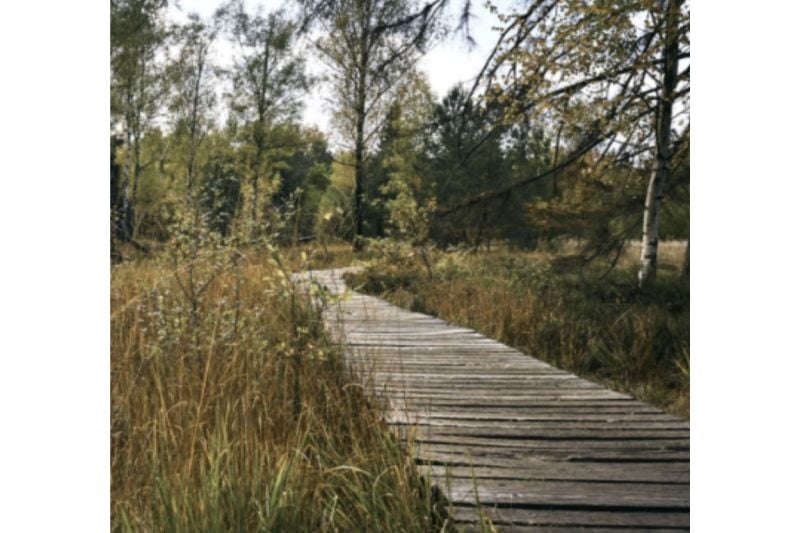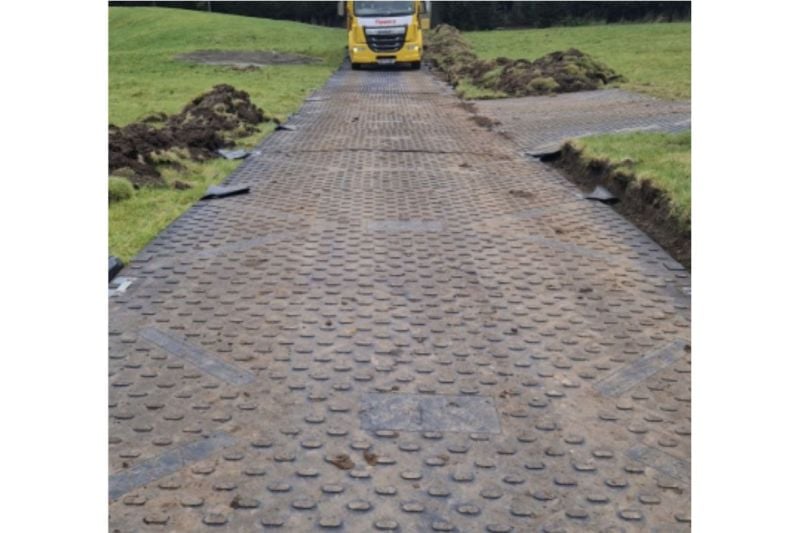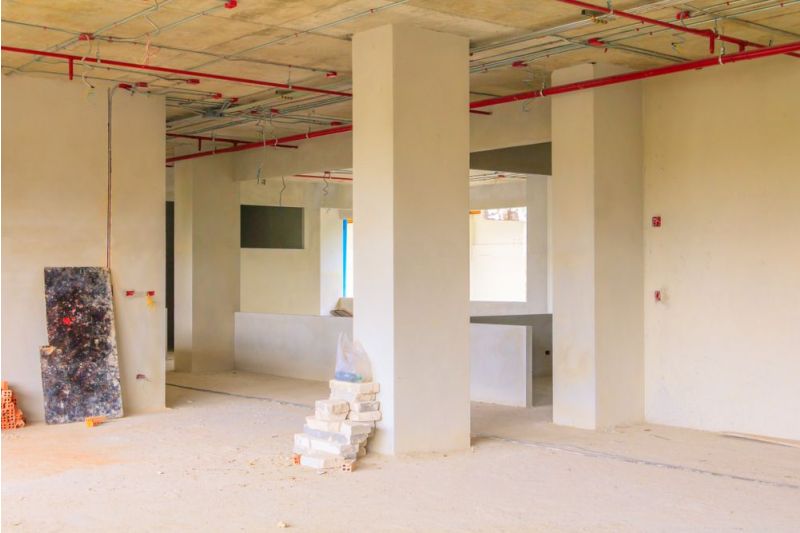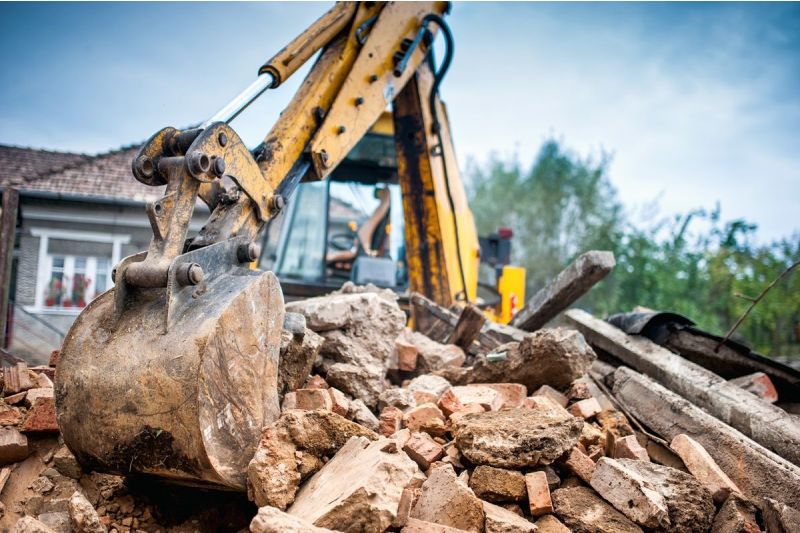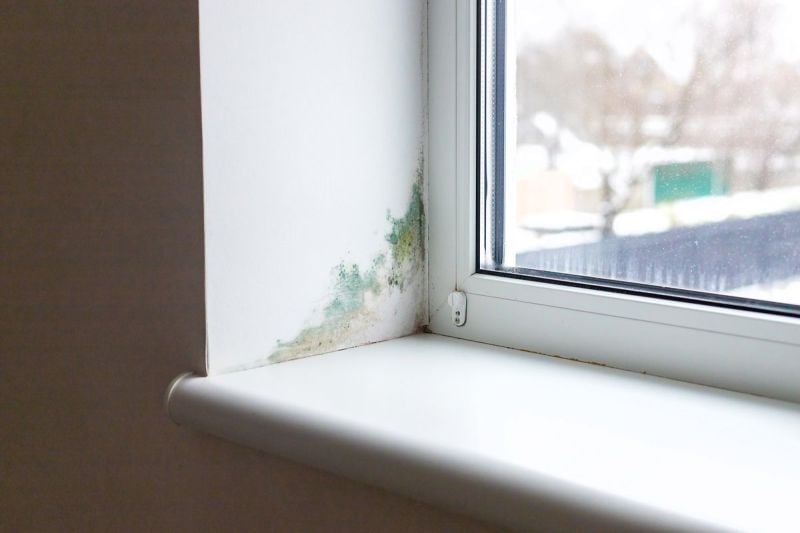Protecting and putting moisture barriers up during construction projects is essential to avoid mould growth, materials degrading, and potential structural damage.
This is especially important during the winter months when the weather in the UK gets wetter and colder. In this guide, we look at the best ways you can protect buildings from moisture during a construction project and the key strategies you can implement across your site.
Tips to protect buildings from moisture
- Preparing your site and creating drainage systems
- Use polythene sheeting and temporary covers
- Use dehumidifiers and install proper ventilation
- Conduct regular site inspections and quality control
- Building Envelope Protection
- Use water-resistant flooring materials
- Think about post-construction moisture management
Preparing your site and creating drainage systems
It is vital that you prepare your site to help it deal with moisture and rainwater, and there are many systems and methods that you can install.
A construction site must be graded so that it can direct water away from building foundations and that there are temporary drainage systems installed, such as swales, trenches, or drainage ditches, so that it channels rainwater away from the site.
Another common technique across construction sites in the UK is using high-quality dewatering systems such as sump pumps, which is great for sites that struggle with lots of groundwater.
Use polythene sheeting and temporary covers
Polythene sheeting has various uses and benefits that make it more than just a plastic sheet. Polythene sheeting is 100% waterproof and cost-effective. It is a flexible material that can be used for multiple jobs such as covering floors, furniture, and building materials to stop them from getting wet.
There are other materials that you can use to protect buildings from moisture. Tarpaulins or plastic sheeting, such as the PROGUARD® Damp Proof Membrane, can be used as a moisture barrier to prevent moisture from rising into a building, although it can also be used for temporary roof covering, protecting newly-laid floors and other protection applications.
To seal exposed areas like door and window openings, you can use weather-resistant materials such as plastic sheeting or plywood. Another common tactic to protect buildings from moisture is to install canopies or overhangs.
READ ALSO: How to protect windows during building or construction work
Use dehumidifiers and install proper ventilation

It isn’t just the outside of buildings that needs to be protected; construction workers also need to prevent moisture from forming inside buildings.
It doesn’t matter whether you are working in humid climates in the summer or cold climates during the winter months, ensuring that buildings are adequately ventilated is important as this can help prevent moisture building up.
Another moisture management technique which is used across construction sites are the use of dehumidifiers. They help to reduce moisture levels inside buildings, especially in enclosed areas.
Certain jobs take place on building sites like plastering, painting, and pouring concrete, which can release moisture. You should schedule these tasks, so it gives you enough time for it to dry and cure.
Conduct regular site inspections and quality control
It is important that during the construction project, you are regularly monitoring the moisture levels by using meters to test materials like concrete, wood, and drywall before and after installation.
Scheduling regular inspections for signs of water pooling, condensation and leaks will mean that you are reducing the risk of damage to buildings. If you find any issues, it is important that you quickly repair these leaks to prevent substantial damage.
READ ALSO: What is drywall & how do you protect it during a project?
Building Envelope Protection

When it comes to protection, construction workers also need to consider the external skin of a building, providing protection, insulation, and ventilation.
There are a variety of ways you can build envelope protection. Here are some of the most popular strategies:
- Install vapour barriers: These are installed within walls and roofs to prevent moisture and water vapour from penetrating and condensing inside the building. If humidity levels are fluctuating, it is important that vapour barriers are installed to help control the build-up of moisture.
- Use breathable membranes: Breathable membranes allow water vapour to escape from the building while preventing external moisture from entering. They can help to prevent the buildup of condensation in attics and roof systems, helping to maintain dry, insulated spaces.
- Install weatherproofing or flashing systems: By properly installing flashing on window and door openings, roof edges, and wall joints, it will direct water away from the structure.
- Ensure joints are sealed: Applying sealants or caulk to close gaps around pipes, conduits, and ductwork will help to seal joints and stop water and moisture from getting into a building.
Use water-resistant flooring materials
Floors that are in with the ground are another vulnerable area for moisture ingress, and it is important that you consider using water-resistant flooring materials to protect a building during its construction.
Damp-proof membranes must be installed beneath the flooring materials to prevent rising dampness from affecting the structure. Additionally, using water-resistant flooring materials in high-moisture areas like kitchens, bathrooms, and basements can help mitigate the risk of water damage.
Some of the best water-resistant floor protection that can be used is:
- Polythene sheeting: These sheets are 100% waterproof, and they can provide robust protection against dust, dampness, and more.
- Protection Rolls: They are strong corrugated polypropylene rolls providing long lasting protection for windows, doors, stairs, walls and floors.
- PROGUARD® recycled card floor protection: Made from recycled juice & milk cartons, this 100% recyclable material is water-resistant.
- Damp Proof membrane: This waterproof and rot proof material can be cut to fit any shape of floor.
READ ALSO: External ground protection: Common mistakes to avoid
Think about post-construction moisture management
Once a building has been complete, it is important to still run some tests to manage moisture levels. Construction workers are advised to test HVAC systems to ensure proper humidity control and air circulation is going into the building.
It is still important to control humidity once a building has been constructed and by using HVAC dehumidification systems it can help to maintain optimal indoor humidity levels (30-50%).
It is important to use with permanent waterproofing coatings, sealants, and flashing to ensure long-term moisture protection once all buildings works have been completed.
Moisture protection for buildings
These proactive measures can significantly reduce the risk of moisture damage and protect the structural integrity of the building.
At Beck, we offer a wide range of temporary protection products. Browse our range of products or get in touch with any questions about them.
For more tips, guides, and advice, visit our news page.



